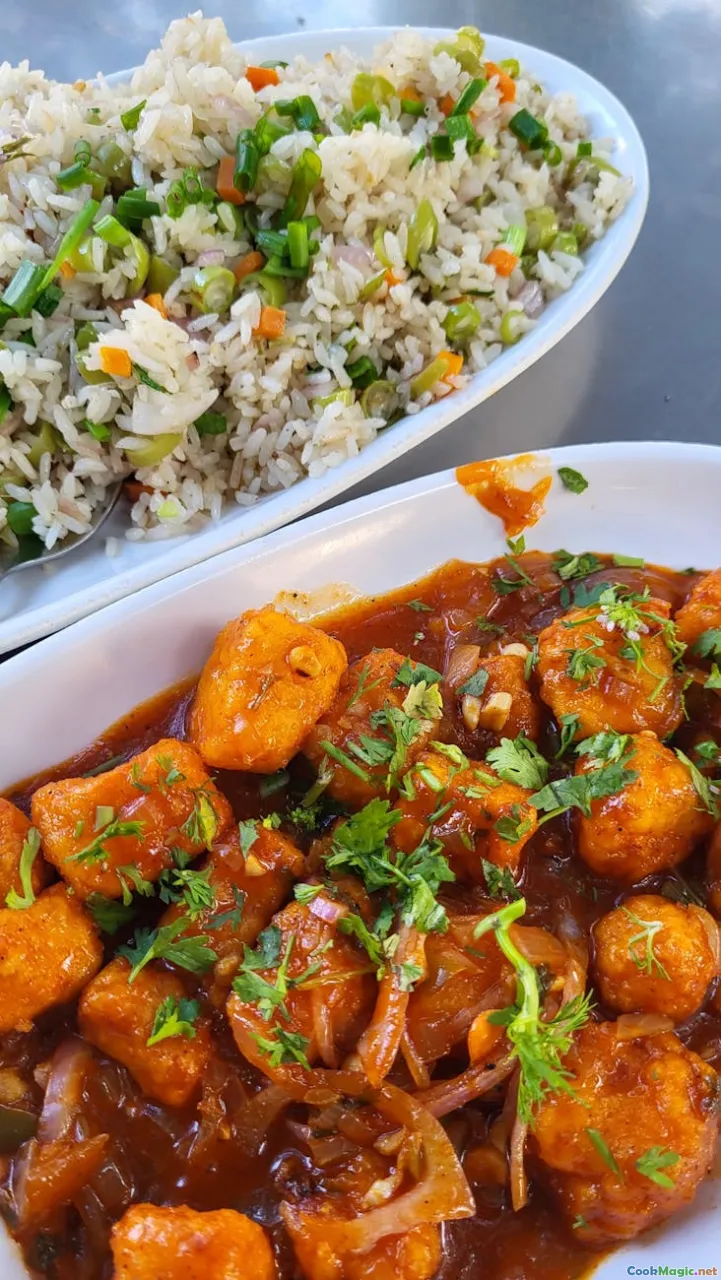From Creole to Chinese: Mauritius Culinary Fusion
7 min read Discover how Mauritius's vibrant culinary scene seamlessly blends Creole flavors with Chinese influences, creating a unique gastronomic tapestry. April 28, 2025 05:55
From Creole to Chinese: Mauritius Culinary Fusion
An Inviting Journey into Mauritius’s Flavorful Tapestry
Imagine an island where the scent of freshly grilled seafood mingles with the aromatic spices of Creole cooking, while hints of soy and ginger weave through the air. Welcome to Mauritius—a melting pot of cultures, histories, and culinary traditions that have fused over centuries into a vibrant and dynamic food scene. This island isn’t just a paradise of natural beauty; it’s a living, breathing kitchen where Creole and Chinese flavors dance together, creating a gastronomic symphony that is both authentic and innovative.
The Cultural Roots: A Historical Perspective
The Creole Heritage: A Legacy of Diversity
Mauritius’s Creole cuisine is a reflection of its complex history. Brought to the island by African slaves, Indian indentured servants, and European colonists, Creole food is an amalgamation of African, Indian, French, and Malagasy influences. Dishes like Biryaniwith a Mauritian twist,Rougaille(a spicy tomato-based sauce), andGateau Piment (chili cakes) showcase this diversity.
Chinese Immigrants and Their Culinary Footprint
In the 19th and early 20th centuries, Chinese laborers arrived on the island, primarily from Canton (Guangdong). They brought with them techniques like stir-frying, steaming, and the use of soy-based condiments. Their influence is evident in popular street foods such as Dim Sum, Spring Rolls, and Char Siu pork, which have been seamlessly woven into the local culinary fabric.
The Fusion: Where Cultures Converge
A Meeting of Flavors: The Mauritian-Chinese Blend
In Mauritius, the culinary fusion is not just a theoretical concept but a daily reality. Street vendors, family-owned eateries, and high-end restaurants craft dishes that embody this cross-cultural harmony. For example, Chinese-style seafood curriesare seasoned with local spices, whileCreole-inspired stir-fries often incorporate tropical fruits like pineapple or mango.
Signature Dishes and Their Evolution
- Sushi with a Mauritian Twist: Fresh fish like tuna or barracuda is served with local chutneys or spicy sauces, blending Japanese technique with island flavors.
- Biryani and Fried Rice: Mauritian Biryani, influenced by Indian and Creole spices, is often served alongside Chinese-style fried rice, creating a feast of contrasting yet complementary tastes.
- Dim Sum with a Mauritian Touch: Dumplings filled with curried vegetables or seafood, seasoned with local herbs, offer a unique twist on traditional Chinese dim sum.
Culinary Techniques and Ingredients
The fusion cuisine relies heavily on techniques like stir-frying, steaming, and grilling—methods introduced by Chinese cuisine—while incorporating ingredients such as piments (chili peppers), vanilla, coconut milk, and tropical fruitsfrom the island’s native flora. The use offive-spice powderalongside Mauritian spices likecumin, coriander, and tamarind creates complex flavor profiles.
Personal Stories and Food Experiences
A Mauritian Chef’s Perspective
Chef Marie-Claire, a local culinary artist, shares how her grandmother’s kitchen was a melting pot of scents—garlic and ginger from Chinese stir-fries mixed with the bold aroma of Creole sauces. She recalls experimenting with combining soy sauce into traditional Mauritian seafood dishes, resulting in a new signature flavor that became a local favorite.
The Vibrant Street Food Scene
Walking through Port Louis, the capital, one encounters bustling food stalls offering Piquant Fish Cakesserved with a spicy mango chutney orChinese-style BBQ skewers glazed with honey and soy. There's an unspoken camaraderie among vendors, each adding their twist to classic recipes, making every bite an adventure.
Social and Cultural Significance
Food in Mauritius is more than sustenance; it’s a story of resilience, adaptation, and unity. The culinary fusion reflects the island’s history of migration, trade, and intercultural exchange. Celebrations like Maha Shivratri, Chinese New Year, and Independence Day often feature dishes that symbolize this hybridity—highlighting the island’s collective identity.
Where to Experience This Fusion
Local Markets and Food Festivals
- Port Louis Central Market: Dive into the vibrant stalls offering freshly caught seafood, Mauritian spices, and Chinese condiments.
- Festival of Fusion: An annual event celebrating the island’s culinary diversity, featuring cooking competitions, tastings, and cultural performances.
Recommended Restaurants
- Le Capitaine: Known for its seafood dishes that blend Creole and Chinese flavors.
- La Table du Château: Offers a refined take on fusion cuisine, with meticulously crafted dishes showcasing the island’s diverse influences.
Final Thoughts: A Culinary Reflection
Mauritius’s culinary scene is a testament to how cultures can converge harmoniously in the kitchen. The island’s food tells stories of migration, adaptation, and celebration—each dish a chapter in a grand narrative of unity through flavor. Whether you’re savoring a spicy Rougaille with rice or biting into a dim sum filled with curried seafood, you’re experiencing a living mosaic of histories and tastes.
For food lovers and cultural explorers alike, Mauritius offers an inspiring reminder that the best dishes are those born from openness, curiosity, and the fearless blending of traditions. So next time you indulge in a Mauritian meal, remember—you’re tasting a piece of history, a splash of culture, and a celebration of life's rich diversity.
Embark on this culinary journey and let the flavors of Mauritius inspire your own kitchen adventures.









